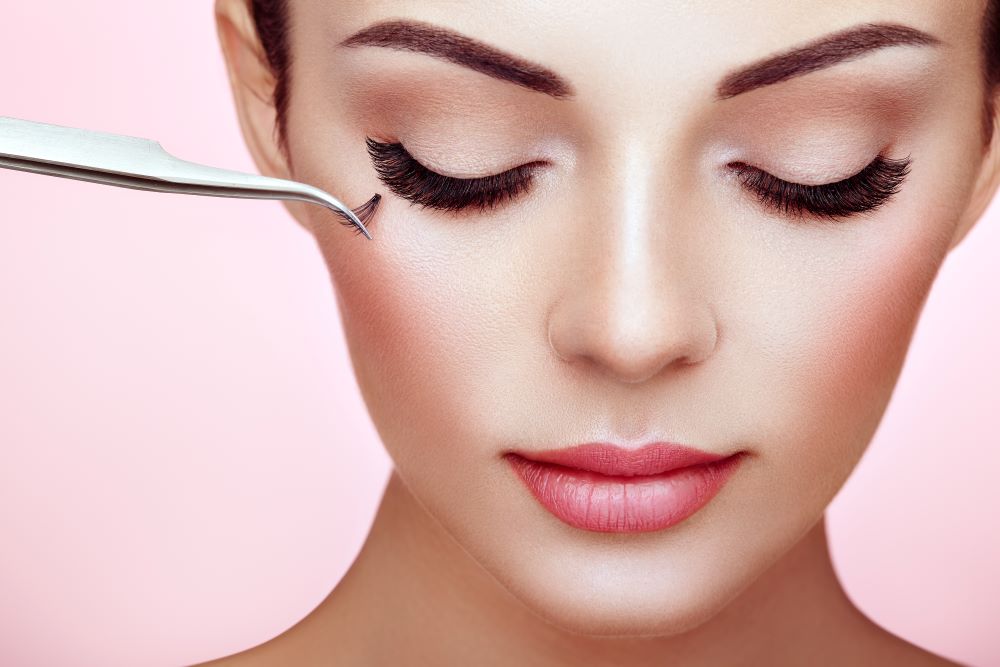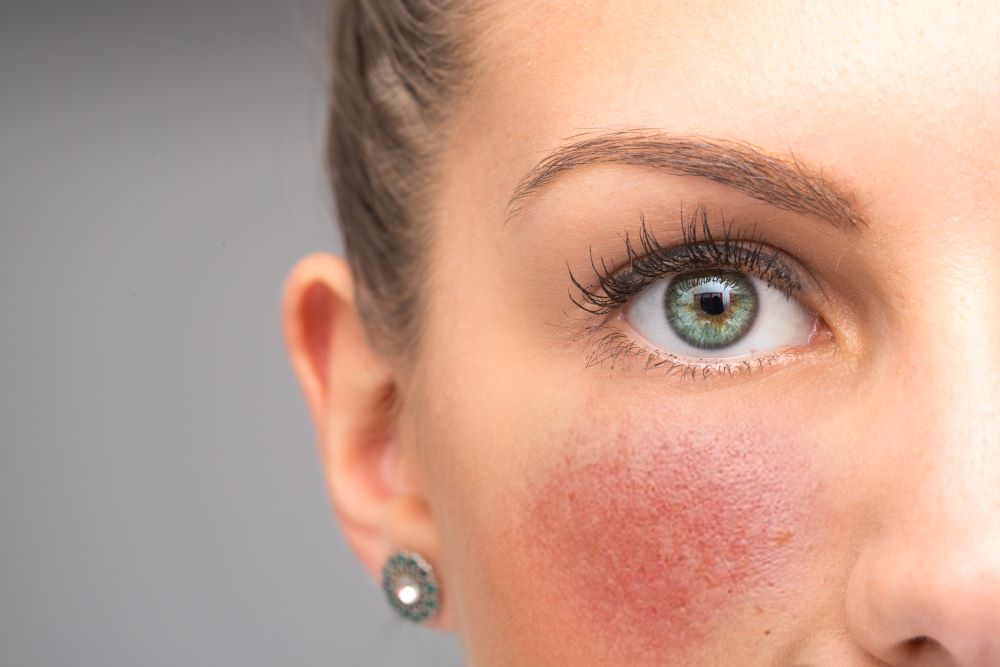Der Lichtschutzfaktor (LSF) ist ein Maß dafür, wie lange man sich mit Sonnenschutzmittel der Sonne aussetzen kann, ohne zu verbrennen. Er gibt an, wie viel länger man sich mit einem Sonnenschutzmittel der Sonne aussetzen kann, ohne einen Sonnenbrand zu bekommen, als wenn man überhaupt keinen Schutz verwendet. Zur Bewertung des Lichtschutzfaktors wird die COLIPA International Sun Protection Factor Test Method verwendet, bei der die maximale Rötungsempfindlichkeitsschwelle (Minimum Erythema Dose, MED) nach der Anwendung von Sonnenschutzmitteln auf standardisierte Weise berechnet wird.
Der Lichtschutzfaktor (SPF) ist ein Maß dafür, wie gut ein Sonnenschutzmittel vor UV-Strahlung schützt. Dabei handelt es sich hauptsächlich um die UV-B-Komponente des Sonnenlichts. Sonnenschutzmittel müssen uns auch vor UV-A-Licht schützen, um uns vor anderen lichtbedingten Hautschäden zu bewahren. Infolgedessen müssen Sonnenschutzmittel in Europa seit 2006 Mindeststandards für die Wirksamkeit gegen UV-B- und UV-A-Strahlung erfüllen:
- Lichtschutzfaktor (LSF): Sonnenschutzmittel mit einem Lichtschutzfaktor von 6 oder höher sind optimal, um Ihre Haut vor den schädlichen Sonnenstrahlen zu schützen.
- UV-A-Schutzfaktor (UV-A-PF): Der UV-A-Schutzfaktor muss mindestens ein Drittel des Sonnenschutzfaktors betragen.
Ein Sonnenschutzmittel mit einem LSF von 30 sollte einen UV-A-Schutzfaktor (UV-A-PF) von mindestens 10 haben. COLIPA hat eine Empfehlung für In-vitro-Tests zur Prüfung des UV-A-Schutzfaktors abgegeben. Das Symbol, das die Einhaltung des erforderlichen UVA-Schutzes anzeigt, befindet sich auf der Verpackung und besteht aus einem Kreis mit der Buchstabenkombination "UVA".
Welchen Lichtschutzfaktor brauche ich?
Jeder Mensch reagiert anders auf die Sonne. Es gibt verschiedene Hauttypen, die auf der Farbe der Haut, der Haare und der Augen basieren. Darüber hinaus benötigt jeder Hauttyp eine einzigartige Selbstverteidigungszeit.
Hauttyp 1
Diese Hauttypen haben rötlich blondes Haar, helle Augen, einen sehr hellen Teint und viele Sommersprossen. Sie bekommen immer einen Sonnenbrand und werden nie braun. Die Selbstschutzzeit beträgt 3 bis 10 Minuten in der Sonne.
Hauttyp 2
Blondes Haar, helle Augen, blasse Haut, oft mit Sommersprossen und fast immer mit einem Sonnenbrand behaftet. Die Selbstschutzzeit beträgt 10-20 Minuten.
Hauttyp 3
Menschen mit dunkelblondem bis braunem Haar, einem mittleren Teint und hellen oder dunklen Augen bräunen in der Regel langsam, aber gut. Außerdem bekommen sie manchmal leicht einen Sonnenbrand und haben 20-30 Minuten Selbstschutzzeit in der Sonne.
Hauttyp 4
Haare: dunkelbraun oder schwarz, Hautfarbe: dunkel, Augen: dunkel, Sonnenbrand ist ungewöhnlich, wird immer braun. Die Selbstschutzzeit beträgt normalerweise 30 bis 45 Minuten.
Hauttyp 5
Schwarzes Haar, dunkler Teint, dunkle Augen, bekommt sehr selten einen Sonnenbrand, wird immer und schnell braun. Die Selbstschutzzeit beträgt 45-60 Minuten.
Hauttyp 6
Diese Hauttypen haben schwarzes Haar, einen sehr dunklen Teint und dunkle bis schwarze Augen. Sie bekommen sehr selten einen Sonnenbrand und haben eine sehr unempfindliche Haut. Die Selbstschutzzeit beträgt 60 bis 90 Minuten.
Wie wird der Lichtschutzfaktor berechnet?
Sie können Ihren Lichtschutzfaktor und die maximale Zeit, die Sie täglich der Sonne ausgesetzt sein können, grob berechnen. Um dies zu berechnen, multiplizieren Sie Ihren Lichtschutzfaktor durch Ihre Eigenschutzzeit. Das ist die Zeit, die Sie sich in der Sonne aufhalten können, ohne Ihrer Haut zu schaden. Er wird durch Ihren individuellen Hauttyp bestimmt.
Eine Person mit Hauttyp 2 hat zum Beispiel eine Eigenschutzzeit von etwa 10 bis 20 Minuten. Mit einem Sonnenschutzmittel mit LSF 20 würde dies theoretisch bedeuten, dass man 200 bis 400 Minuten in der Sonne bleiben könnte (also etwa drei bis sieben Stunden).
Das deutsche Bundesamt für Strahlenschutz rät jedoch, nur 60 Prozent der berechneten Schutzzeit für den Aufenthalt in der Sonne zu nutzen. Auch wenn ein Lichtschutzfaktor von 50 oder 100 vorhanden ist, dringt immer noch eine Restmenge an UV-Strahlung in die Haut ein und verursacht dauerhafte Schäden an der Haut, die Krebs verursachen können.
Welcher LSF ist gemäß Hauttyp empfehlenswert?
Je nach Hauttyp sollten Sie die für Sie geeignete Schutzstufe verwenden:
Leichter Schutz: LSF 6 bis 10
Mittlerer Schutz: LSF 15 bis 20
Hoher Schutz: LSF 30 bis 50
Sehr hoher Schutz: LSF 50+
Die verschiedenen Filter der Sonnenschutzmittel
Die bereits erwähnten UVA- und UVB-Filter verhindern, dass UV-Strahlung in Ihre Haut eindringt, die sonst Schäden verursachen würde. Es wird daher zwischen zwei Arten von Filtern unterschieden:
Mineralische UV-Filter
Titandioxid und Zinkoxid sind zwei Arten von mineralischen UV-Filtern. Sie reflektieren die UV-Strahlung und schützen die Haut vor Sonnenbrand.
Organische UV-Filter
Organische UV-Filter absorbieren UV-Strahlung und wandeln sie in Wärme um.
In Sonnenschutzprodukten werden diese UV-Filter so kombiniert, dass der erforderliche UV-Schutzfaktor erreicht wird. Je höher der Anteil der Filter in der Mischung ist, desto besser.
Worauf achten bei Gesichtscreme mit LSF?
Es ist besser für Ihre Haut, wenn Sie sie allmählich an die Sonne gewöhnen können: Tragen Sie also als ersten Schritt Ihrer morgendlichen Routine im Bad Sonnenschutz auf - denn im Frühling steht die Sonne schon recht hoch am Himmel. Da unsere Haut durch den Winter nicht mehr an eine so hohe Strahlung gewöhnt ist, muss sie sich schließlich daran gewöhnen. Es dauert einige Zeit, bis die Melaninproduktion beginnt, die UV-Strahlen zu absorbieren, die sonst tiefer in unsere Haut eindringen und unsere Zellen schädigen würden, wenn wir uns ohne Sonnenschutzmittel in der Sonne aufhalten würden. Nur wer jeden Tag Sonnenschutzmittel verwendet, kann Falten und Pigmentstörungen vermeiden.
Schäden durch die Sonne werden frühestens nach fünf bis zehn Jahren sichtbar. Daher ist es wichtig, dass wir im Alltag Tagescremes mit mindestens LSF 15 verwenden. Dies schützt uns vor der Strahlenbelastung während der kurzen Momente in der Sonne. Allerdings sollten Sie diesen Schutz nicht überbewerten. Ein Sonnenschutzmittel mit einem hohen Lichtschutzfaktor (LSF) ist erforderlich, wenn Sie sich lange in der Sonne aufhalten. Sonnenschutzfilter sind aufgrund der verschiedenen Komponenten in dieser Form von Produkten stärker. Um Sonnenschäden vorzubeugen, ist es wichtig, dass Sie jede Haut, die der Sonne ausgesetzt ist, mit Sonnencreme eincremen - nicht nur Ihr Gesicht. Achten Sie darauf, dass Sie auch die oft übersehenen Stellen wie Ohren, Hals, Hände, Arme, Beine und Kopfhaut eincremen.
Fakten zum Lichtschutzfaktor
- Sie werden auch mit Sonnencreme und im Schatten braun, dies passiert einfach nur etwas langsamer
- Die Haut von Kindern ist empfindlich, daher ist es wichtig, Sonnenschutzmittel mit einem hohen Lichtschutzfaktor zu verwenden. Neben den chemischen Filtern bieten auch mineralische Filter einen guten Sonnenschutz für Kinder.
- Ein lockeres, weißes T-Shirt bietet einen Sonnenschutz von mindestens LSF 10, während ein schwarzes T-Shirt sogar 15 bietet. Wenn das Hemd eng anliegt oder nass ist, verringert sich der UV-Schutz.
- Es gibt auch Kleidung, die einen UV-Schutz bietet, was besonders bei Aktivitäten im Freien in der Sonne nützlich ist.
- Die Intensität der Sonneneinstrahlung nimmt pro 1000 Höhenmeter über dem Meeresspiegel um etwa 10% zu.
Wie suche ich das richtige Sonnenschutzmittel aus?
Die folgenden Tipps helfen Ihnen bei der richtigen Auswahl und Anwendung von Sonnenschutzmitteln:
- Das Sonnenschutzmittel bietet ausreichenden Sonnenschutz.
- Das BfS empfiehlt, dass Kinder Sonnenschutzmittel mit einem Lichtschutzfaktor von 30 oder höher verwenden, und Erwachsene sollten Sonnenschutzmittel mit einem Lichtschutzfaktor von 20 oder höher verwenden. Wenn Sie sich längere Zeit in großen Höhen, in der Nähe von Schnee, im Wasser oder generell in der Sonne aufhalten, sollten Sie sich für ein Sonnenschutzmittel mit einem sehr hohen LSF (50+) entscheiden.
- Das Sonnenschutzmittel schützt Sie auch vor UV-A-Strahlung.
- Der UV-A-Schutz ist deutlich auf dem Produkt angegeben.
- Eine Liste der Inhaltsstoffe ist vorhanden.
- Wenn Sie überempfindlich auf die Inhaltsstoffe von Sonnenschutzmitteln reagieren, sollten Sie dies bei der Auswahl eines Sonnenschutzmittels berücksichtigen.
- Achten Sie darauf, dass Sie Sonnenschutzmittel auftragen, bevor Sie nach draußen gehen.
- Das Auftragen von Sonnenschutzmitteln 20-30 Minuten vor dem Sonnenbad garantiert einen vollständigen Schutz.
- Es wird eine ausreichende Menge Sonnenschutzmittel aufgetragen.
- Bei fünf Ganzkörperanwendungen sollten Sie 200 ml Sonnenschutzmittel verbrauchen.
- Es wird regelmäßig neu aufgetragen.
- Achten Sie darauf, alle zwei Stunden Sonnenschutzmittel aufzutragen, insbesondere nach dem Schwimmen oder dem Abtrocknen mit dem Handtuch.



